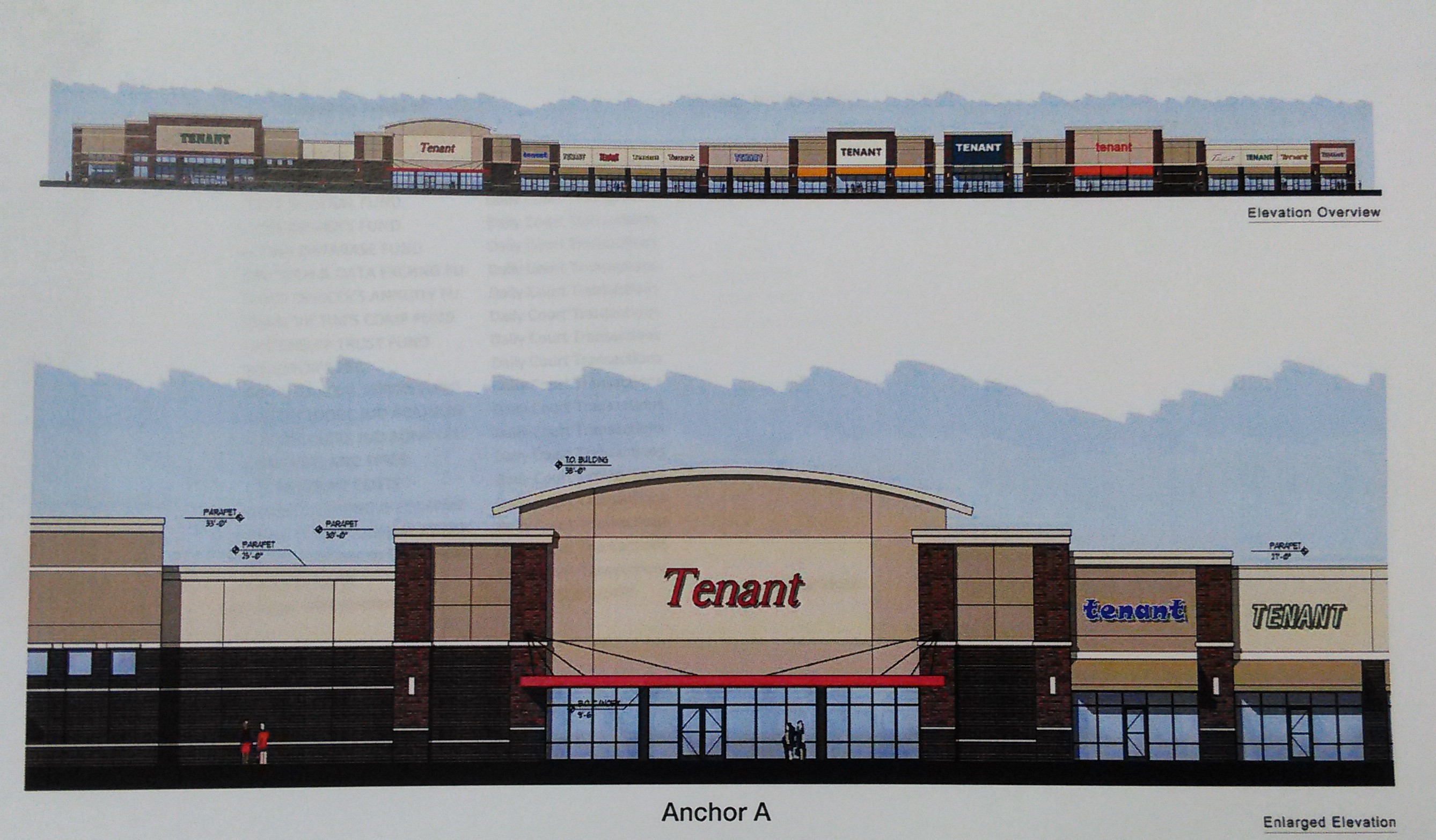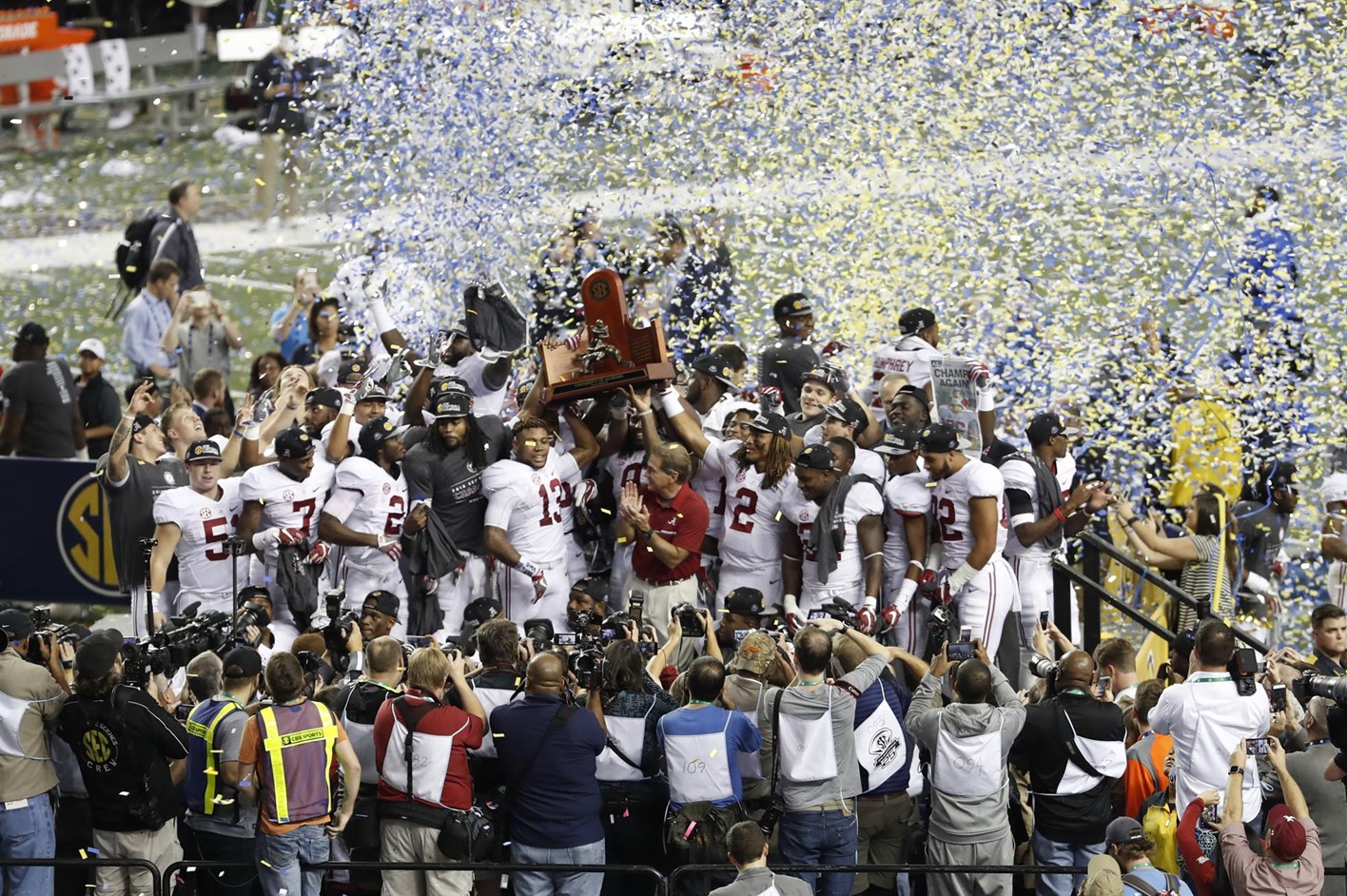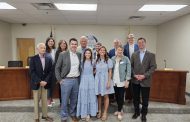By Bethany Adams, For The Tribune
With another major shopping center on the way, Trussville has become a major retail hub in northeast Jefferson County. While the city’s proximity to two major Interstates is appealing to retailers, having strong economic neighbors plays a major role in attracting higher end businesses.
Last year, the Birmingham Business Journal published the results of a study by parent company American City Business Journal which outlined the most affluent cities and neighborhoods in Alabama. The study considered factors like population, education, home value and income, and the results ranged from expected to surprising.
Mountain Brook topped the list in nearly every category, coming in at No.89 nationally (out of 15,090). With a median household income of $131,281 and a median home value of $542,800, it ranked over neighborhoods like Shoal Creek, Highland Lakes and Vestavia Hills.
What may come as a surprise, however, is which city came in at number No.12 in Alabama.
With a median household income of $84,514 and a median home value of $228,700, Trussville ranked No. 12 in the state and No. 2,174 nationally. Neighboring cities Clay and Springville also ranked highly on the list.
When it comes to incorporated cities, Trussville is second on the list in the metro area only to Mountain Brook in terms of median household income. Vestavia, Hoover, and Clay round out the top five cities in Jefferson County for median household income.
This comes as a surprise to a lot of people according to Kevin Sargent, Managing Broker at Brik Realty in Trussville. He said that the income levels in Trussville could be due, in part, to medical and banking professionals from Birmingham choosing to live where housing costs can be $40,000-$50,000 less than similar homes in other areas.
Lower housing costs are something that draws new residents from other states, as well. “We’ve seen a lot of… people from New England coming in because of the larger-scale manufacturing jobs like Honda,” Sargent said. “Even though they’re a little farther out, this is the closest higher-end area to them.”
Another draw is the school system, which Sargent said has been “a big part of Trussville’s success” for more than 20 years. “The school system has brought in new residents to Trussville from outside of Trussville, which has increased demand in the home market,” he said. “By doing that and bringing that much more population into Trussville, it has created the need for retail.”
And developers have been more than willing to fill that need. But more than just serving the needs of the city’s population, retail developments in Trussville can draw customers from as far as 60 miles to the north and east, from cities like Gadsden. Added to its proximity to two major interstates, Trussville’s location in relation to retail-sparse areas makes it an attractive city for retailers and restaurant owners.
In addition, factors like infrastructure and income create strong incentives for businesses to move into places like the Pinnacle shopping center. “Up there, you’ve got the infrastructure in place, you’ve got the parking in place, you’ve got the high levels of foot traffic,” Sargent said. “So that’s why those are a premium right now.”
As far as parking and foot-traffic go, the Trussville Redevelopment Authority is working on a plan for the redevelopment of the downtown area which will make it more pedestrian and family-friendly. The plan is a part of something that, according to Sargent, is crucial to the future of the city: strategic growth.
Sargent described Trussville as a puzzle piece, explaining that failure to follow a plan can result in a struggling or crippled infrastructure. “So it’s very important to have a strategic plan in place for traffic, for potential businesses coming into the area and for preexisting businesses,” he said.
But no city is an island, and while customers can come from over 50 miles away, Trussville’s closest neighbors also play an important part in the city’s development. The city of Clay has a population of nearly 10,000, according to Sperling’s Best Places, and a median home price of $142,100. Sargent pointed out that, since Clay is more home-oriented, its residents bring a lot of support to Trussville’s businesses.
It’s a similar situation with places like Pinson, which has a population of over 7,400 and a median home price of $109,600, and Argo, with a population of over 4,000 and a median home price of $179,500.
With an estimated population of around 23,000 according to Trussville City Clerk Lynn Porter, Trussville relies heavily on the populations of these neighboring communities to support its retail industry.
With the current leadership, Sargent believes that Trussville is headed toward a bright future. “In the past, we’ve had some issues with really planning ahead and making sure the right pieces of the puzzle—infrastructure, tax incentives—were in place to incentivize people to come here,” he said. “But thankfully now, I think Trussville is just beginning its real surge up. I think in five to ten years—again, as long as strategic growth is in place– this will be a hot destination area.”








88 Comments
Deborah Killian Kilgo
Retail hub, traffic nightmare!
Jordan Horn
We can’t even field tenants to occupy our current shopping & strip malls… I don’t know where the idea is coming from that this will be any different.
Rob Langford
That’s great! Now if only our city leaders would do something about this horrible traffic!!!!!
Bob Hicks
Maybe the stores will be there but how will we get through the traffic to get to the stores?
Kevin Small
The down side is the traffic takes away from the convenience.
Pennie Pyle
The traffic is awful now how on earth do you think it will be when these stores open up?!
Mike-Holly Downing
Bringing 280 to Hwy 11.
Mike-Holly Downing
Bringing 280 to Hwy 11.
Mike-Holly Downing
15 min drive to the Summit.
Mike-Holly Downing
15 min drive to the Summit.
Gwendolyn Wardlow
Where is this supposed to go up.. Old Kmart?
Gwendolyn Wardlow
Where is this supposed to go up.. Old Kmart?
Mike Jay
Trussville with be the Hoover of the East….I give it 4 years…its growing so fast
Mike Jay
Trussville with be the Hoover of the East….I give it 4 years…its growing so fast
Shanekia Vashun Mobley
I am just going to say traffic
Shanekia Vashun Mobley
I am just going to say traffic
Adam Black
Who cares about a strong economy, being attractive to future residents, and flourishing job opportunities WHEN I CAN COMMUTE ON MY HORSE AND BUGGY TO THE BIG B WITHOUT BEING STOPPED BY A RED LIGHT.
If anything needs to change about Trussville, it’s the constant complaining from its residents. One day, when the traffic flow situation is being worked on, the same people who are complaining about bad traffic will complain about construction delays. Just wait…
Adam Black
Who cares about a strong economy, being attractive to future residents, and flourishing job opportunities WHEN I CAN COMMUTE ON MY HORSE AND BUGGY TO THE BIG B WITHOUT BEING STOPPED BY A RED LIGHT.
If anything needs to change about Trussville, it’s the constant complaining from its residents. One day, when the traffic flow situation is being worked on, the same people who are complaining about bad traffic will complain about construction delays. Just wait…
Gail Smith Wright
We have such a traffic problem on Hwy 11 (aka Hwy 140) … cannot imagine how bad it will be when the new shopping center opens. It took me 45 minutes to get out of the Target shopping center one day last week. I went to the Hallmark Store, and because everyone has to go out where there is a light, it took a full 45 minutes to get out of the shopping center, then another half hour to get to North Chalkville Road, where it was still a nightmare before I made it to my home in Kidron! The Pinnacle should never have been approved UNTIL an interstate access was approved. It’s totally stupid to be on I-59 and be able to see the Pinnacle, but can’t get there without driving all the way to Chalkville Rd, down to Hwy 11, then all the way through downtown. It is a total nightmare. I can leave Kidron and be at the Summit in way less time. All my Christmas shopping was done online, except for one item which I thought I would find at the Pinnacle. I didn’t find it, so I just wasted my time. We have so many empty stores around the town because people have discovered it isn’t worth the hassle of traffic. Have lived in Trussville since 1988 and people have complained about the traffic all this time … and it is only getting worse.
Gail Smith Wright
We have such a traffic problem on Hwy 11 (aka Hwy 140) … cannot imagine how bad it will be when the new shopping center opens. It took me 45 minutes to get out of the Target shopping center one day last week. I went to the Hallmark Store, and because everyone has to go out where there is a light, it took a full 45 minutes to get out of the shopping center, then another half hour to get to North Chalkville Road, where it was still a nightmare before I made it to my home in Kidron! The Pinnacle should never have been approved UNTIL an interstate access was approved. It’s totally stupid to be on I-59 and be able to see the Pinnacle, but can’t get there without driving all the way to Chalkville Rd, down to Hwy 11, then all the way through downtown. It is a total nightmare. I can leave Kidron and be at the Summit in way less time. All my Christmas shopping was done online, except for one item which I thought I would find at the Pinnacle. I didn’t find it, so I just wasted my time. We have so many empty stores around the town because people have discovered it isn’t worth the hassle of traffic. Have lived in Trussville since 1988 and people have complained about the traffic all this time … and it is only getting worse.
Rob Langford
Mr. Black it’s called asking our city leaders to plan for the future. It’s called being proactive instead of reactive. Horse and buggy? Really come on man. Do you you really want 11 to turn into 280?
Rob Langford
Mr. Black it’s called asking our city leaders to plan for the future. It’s called being proactive instead of reactive. Horse and buggy? Really come on man. Do you you really want 11 to turn into 280?
Debra Pack
Got that right
Debra Pack
Got that right
Adam Black
I’ve lived in Trussville for 25 years. I went to Hewitt-Trussville K-12. My family chose to continue living here after we left our parent’s houses. I am deeply aware of Trussville and its historical timeline. I get where old time residents are coming from when they feel resistant towards expansion. We lose the “good ol’ Trussville”.
I’ve talked to so many people who felt that school expansion was a poor decision. Even more so who felt the buy outs of sticks and stuff, marvins, and Food World were bad ideas.
My opinion is the complete opposite. I am excited to see Trussville take steps towards becoming an economically strong community that ranks on a national stage. I feel that with advancements in the school, attracting great businesses, and remodeling the downtown area to attract young families, we will get to be a part of a thriving community and reap the benefits of it.
I feel that people are narrow minded to look at “growing pains” as “final outcomes”. I may be proven wrong, but I trust the leaders that we’ve elected to do what’s best for Trussville until I’m proven otherwise.
My point was that residents of Trussville appear to be very pessimistic, and I wish we would just let elected officials do their jobs. There are many communities in close vicinity that have no intentions of ever expanding. These cities may be attractive to those who are not interested in a growing community.
Adam Black
And I’ll add: Yes, I would love to see 11 turn into 280. I would love to endure a brief moment of congested traffic to see so many employment opportunities. I would gladly welcome one of the most advanced hospitals in the country, and would be thrilled to have a shopping destination like the summit in my community. I would love to see people commute 30-50 miles to shop and eat like they do HWY 280.
I hate sitting in traffic as much as the next guy, but if their is congested traffic that means there’s a reason. People want to be in our community, and I’m all about that.
Brian Wells
Yeah more traffic
Wade Cox
What would you rather have Apartments or retail space ??? Both involve growth and more people but the leaders have chosen retail not a bad plan considering there are no apartments in Trussville
Mike Jay
Doesn’t matter…housing price will go down as thr old Trussville move out…they will become desperate and sell their homes for less price
Kathy Sills
AND A TRAFFIC JAM BEYOND BELIEF….there is no excuse for not making a decision about traffic before all this building….the new 280…very sad
Tasi Jones
Lord Jesus! Traffic is going to be horrifying. Too many traffic lights.
I used to live off Hwy 11.
Phillip Cottle
I lived on 280 for a short while, then moved to Trussville to get away from the traffic. Lived in Trussville 20 years and watched the city grow to what it is now. More retail means more traffic and the nightmare only grows. Welcome to the age of a 2 hour trip just to get milk and bread. With the growth, crime will continue to rise also. The great part is that someone selling the properties for these shopping centers are lining their pockets. There will be new jobs, but retail jobs aren’t on the high end of the pay scale, usually only being a little over minimum wage. I recently moved from Trussville and I could not get the price I wanted for my house and wasn’t asking anymore than I originally built the house for. I hope it works for Trussville but I would like to say, “beware of what you ask for.”
Gail Smith Wright
It’s only a better idea if residents enjoy shopping there and keep the retailers in business. I don’t mind the retail stores, I just think more consideration and planning should be done before adding the new stores. We have been dealing with traffic trying to merge off of Valley Rd onto North Chalkville Rd for so long, and promises are made, but nothing is done to correct it. We have too many businesses with locked in parking lots, so you cannot go from one to the other without driving out into the traffic flow on Hwy 11 or Chalkville Rd. Like I said in an earlier post, I have lived here since 1988 and the exact same problem areas exist today that existed then … and we have created many more impossible situations.
Vickie Aldridge
Everyone is complaining now, but we will be those people shopping at those new stores. It’s how it always goes..
Merrie Tanner Golden
There are apartments in trussville. My grandmother lives in them. They are kind of behind where sticks and stuff was.
Merrie Tanner Golden
I will say this. I don’t live in trussville. I live in springville. We don’t have the traffic that trussville does by any means but we have growing pains, not as bad retail wise but population growth. We welcome all new retail and support all of our local small businesses. I think bad traffic in trussville is a sign of good tax revenue there. It’s one of the reasons yalls schools are so sought after which is also one reason your property value is so high. The only time I have horrible traffic is one weekend on March, November and December because I live behind Homestead Hollow.
Ian Maddox
Love this article and this fine town. Good things happening!
Richard Hitchcock
I believe just the opposite. I live in Brooke’s Crossing. As a, gulp, senior adult I find the increasing convenience of having diverse quality stores within a mile of me to be quite helpful. And the evidence is there that others feel the same way. The problem with Trussville is not the “downtown” shopping but cars driving through town on hwy 11 to get to houses on the east side of town.
Richard Hitchcock
When I moved to Trussville, Hwy 11 was a simple 2 lane highway. The city and DOT were quite visionary in expanding it to 5 lanes which was way more than was needed then. For years people have complained about not having adequate retail businesses here not just for the wages and the ease of getting to quality shops and restaurants but also for the increased tax revenues from the stores. Providing roads and infrastructure to our subdivisions can’t be paid for with property taxes alone. Either we have a moratorium on people moving here (and developer’s building here) or we have responsible growth of our tax base. I like what I’m seeing. And, believe me, we aren’t Hoover or 280. I have an office in Hoover (and I’m building one here in Trussville) and I know the difference. Glad to be here!
Richard Hitchcock
Larger, quality tenants will be a magnet for all.
Richard Hitchcock
Knowing the busy times helps to better plan.
Richard Hitchcock
Most of the time when I leave Brooke’s Crossing it is quite easy even without a traffic light. Now, at 5-7pm I know it will be tough. Too many cars using hwy 11 as a conduit from I-459 to east Trussville (Carrington et al.) Day in and day out, I believe the major traffic jams have more to do with housing than retail.
Jordan Horn
The current tenants being advertised are not those (with the exception of Hobby Lobby… maybe)… At this point, we should fear cannibalization, which (coupled with the traffic problem) would decrease the quality of both shopping centers. If sales are being eaten into with a big box retail competitor within walking distance, those larger quality tenant still won’t stay for long.
William Kennedy
And with that, Highway 11 becomes 280. Congratulations.
William Kennedy
And with that, Highway 11 becomes 280. Congratulations.
Rickey Alexander
Thanks for the traffic
Rickey Alexander
Thanks for the traffic
Sondra Martin
Higher revenue means better schools. Better schools mean housing prices go up. Go, TVille!
Sondra Martin
The land for the exit to the Pinnacle belongs to Birmingham. Birmingham gets no revenue from the Pinnacle, so has no interest in an exit.
Gail Smith Wright
Then, perhaps we put the shopping center in the wrong place. Years before the shopping center went in, we were told that it was going to go off Deerfoot, which would have made it easier to access from the interstate. If the developers could buy the land for the shopping center, looks to me that they could have bought enough for an interstate ramp nearby. That would also take a lot of the traffic off of some other problem areas.
Garth Jensen
Great let’s make traveling threw trussville more of a cluster fuck
Brenda Graves
Where is this going to be
Cheryl Alphin Mathews
I think Trussville is doing a great job with a balance of retail and hometown feel.
Scott Buttram
If you live in Trussville and you’re complaining about the holiday shopping traffic, you might be the type person who would complain if Santa Claus showed up at your house and paid your mortgage for a year.
Seriously, think about this. About 65% of the city’s general fund comes from sales tax. The vast majority of that tax is paid by people that don’t live in Trussville, but come here to shop.
The Trussville schools? You know, the ones that make your home more and more valuable every year? The sales tax paid by the good folks that shop here is worth between $6-7 million every year for the schools which makes your house is worth more money.
So, that traffic you’re complaining about is paying for your police, your fire department, your roads (even the ones that aren’t crowded), your parks, your schools and pretty mush everything else you enjoy so you don’t have to.
If you live in Trussville, maybe you should think about standing on Highway 11 next year with a giant “Thank You” sign in your hand. Or, better yet, write it on the back window of your SUV so visitors will see it while you’re sitting in traffic reading Facebook on your phone. It’ll make you feel better.
Kevin Sargent
Well said.
Sami Anthony Smothers
What are you talking about? Apartments, town homes and joined slab homes are in Trussville. They have been since I can remember. I’m 38
Sami Anthony Smothers
You are correct Sir..
Tammy Delaney
Since it was built, I have wondered: why didn’t they build a flyover connecting the I59 side of trussville into the pinnacle, (similar to the galleria), this idea seems like it would relieve some of the traffic stress on hwy 11.
Jennifer Chinnis Lawley
I excited for the new retailers! Hwy 11 will never be 280, that’s a huge overstatement to even say that. We will never be Centerpoint, these retailers are a more upscale than that. Sure, we are only 15 minutes to the summit, but it’s another 20 once you turn in, to get to the store you would like and find a decent parking space. People will complain about anything. Just stop, and try to find the good.
Gallo Castaneda
I love trussville !!!
Chad Perry
From Carrington, we completely avoid the other (retail) end of highway 11. It’s easier for many of us to shop outside of Trussville with jobs that commute. If access had been created (the first story we heard from leaders) I believe there wouldn’t have been so many empty stores at the Pinnacle. Highway 11 can’t accommodate that much traffic in the day to day.
Chuck Biddinger
I stopped complaining and moved out of Trussville. You are wrong Trussville from 459 to Argo will be worst than 280 in a few short years.
Chuck Biddinger
We move out of Trussville in April. We had no kids in school and we needed to downsize. I got very tired of the traffic on highway 11 and Chalkville Mt, road.
We moved to the Clay area. We can go the back roads to the old K-mart area and Chick-fil-A and Big Lots.
We can get off of 459 and go to Lowe’s and our Mexican Restaurant. Travel only a mile up Hwy11 to get to Login’s and Home Depot.
I see not need to ever use Hwy 11 between 459 and downtown Trussville. I see not need to use Chalkville Mt Rd. between I59 and Hwy. 11.
Since we purchase stuff at The Pig, Dollar General in Clay and Publix in Trussville we have it made. Most stuff normal folks buy at retail stores, we buy on-line. Amazon, Jet, etc.
Chuck Biddinger
No I would NOT complain if Santa Claus showed up and paid my bills. This has zero to do with the Trussville traffic!
Chuck Biddinger
It would help Tammy, but Trussville does not care about the traffic. They only care about news taxes so they have more money to spend.
Shelbi Nicolle
I’m just wondering why we need 4 mattress stores within a .5 mile strip. It’s annoying. Two of them are the same exact dang store! With NO ONE in the parking lot! Who approved this crap??? You only buy a mattress every 8 years
Daniel Courington
Private property. It’s no one’s to approve or disapprove.
Jennifer Chinnis Lawley
More power to you. I appreciate progress and love Trussville.
Jill Faucett Clark
I live north of Pinson and Drive to Fultondale to shop. The distance is further but the trip is quicker because you aren’t stuck in the quagmire of traffic. Sorry, Trussville-You failed to plan.
Andrew Delorme
One place i would love trussville to get is a Dave and Busters
Shone Foley Waite
Perfectly stated, Scott Scott Buttram!!!
Annette Stansell
In response to the above Center Point comment, it’s true Trussville’s schools & businesses will never be Center Point , however, it’s obvious that the parents & grandparents that onced moved from Center Point, Roebuck, East Lake to Trussville didn’t make them or their offsprings better people. Trussville businesses/shopping centers cannot financially survive without their good neighbors.
Georgia Kelly Wright
Thank you Scott Buttram!!!!
Sondra Martin
Developers did not buy the land, they leased it from the Trammell family. It was already flat and had access from highway 11. It was cheaper to lease it and not have to do the excavation off Deerfoot. It was also at the junction of I-459 and I-59. My brother in law was on the team that developed that land initially.
Sondra Martin
Please don’t misrepresent the facts. The city of Birmingham owns that land. They receive no revenue from the mall, so why would they be interested in putting up money to ease our congestion. Believe it or not, this was addressed by the original developer when the mall was built.
Kathy Sills
We are also the traffic hub of the southeast
Kathy Sills
My next move. BEACH
Kathy Sills
You can call them whatever you want…but adjoined houses are apartments….we had a trailer park forever …many students went to HT….and velmas…much better then……MUCH
Alex Davis
This mall looks tiny when you are passing it on Gadsden highway, the parking lot space looks like it’s going to be even worse..
Arlene Sanders
Wish Pinson would get a big shopping center
Sabrina Millwee Meeks
Please work on the traffic problems!!!!!!!!!
Tammy Delaney
Maybe someone at the community meetings could propose the idea… just a thought.
Chris Goodwin
Where Hooters is Irondale
Misti Stupp Garrison
I don’t really understand the traffic complaints. It’s busy during rush hour on a major road. Is that really a surprise? I live in Carrington, work in Mountain Brook (off 280) and my commute each way is 35 to 45 minutes depending on traffic. I have lived and travelled in places that are much much worse. I think as Trussville residents we should really start trying to see all of the good that’s going on versus focusing on the growing pains. By the way, I’m from New York and I chose Trussville when I moved here a couple of years ago because of the schools and I did my homework before chosing where to live. That has to tell you something. This truly is a great community. I’m still very happy with our decision. ☺
Ian Maddox
Yes! Tax base must come from somewhere. City’s are like businesses; you are either moving forwards or backwards, you cannot stand still for long. It’s the proverbial “chicken or the egg”. Infrastructure (new roads) cost money but very few are willing to pay more in taxes so bring on the business. And, yes, I agree that if folks want to compare 280 to Highway 11 they must not travel 280 often. Yikes!!!!
Ian Maddox
Amen!!!!!!
Ian Maddox
Chuck Biddinger with all due respect sir, if you moved why do you care or comment.
Shannon VanderWall Dean
Stores are closing at the Pinnacle and yet they build more. Thats what I don’t understand. Empty stores don’t do much to help the look of a city.